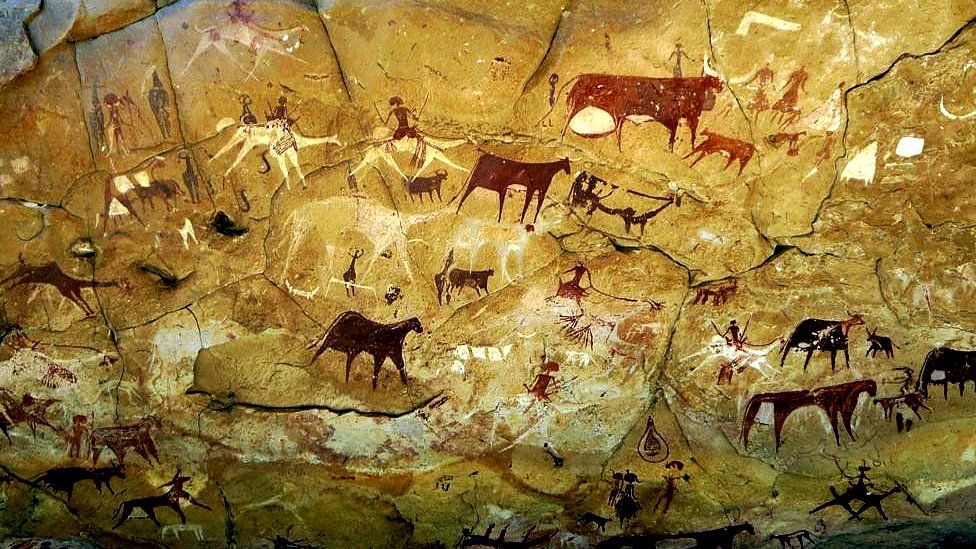Enumerate the Significance of the cave paintings in reconstruction of early History.
The prehistoric Age refers to the time when there was no writing and development. It consists of five periods — Paleolithic, Mesolithic, Neolithic, Chalcolithic & Iron Age. The prehistoric cultures in India are studied through existing artworks, pottery, tools, and other physical things found at archaeological sites. Painting and drawing were the oldest art forms practised by human beings to express themselves, using the cave walls as their canvas.
The Significance of the cave paintings in reconstruction of early History:
Painting and drawing were the oldest art forms practised by human beings to express themselves, using the cave walls as their canvas.
- The paintings of the Upper Palaeolithic phase to Neolithic phase at Bhimbetka have linear representations, in green and dark red, of huge animal figures, such as bisons, elephants, tigers, rhinos and boars besides stick-like human figures
- The Mesolithic paintings: During this period the themes are multiple but the paintings are smaller in size. Hunting scenes predominate. The hunting scenes depict people hunting in groups, armed with barbed spears, pointed sticks, arrows and bows.
- Social structure: Paintings at Bhimbetka show that Pre-historic people were living in small band (small groups) societies. fig: One of the interesting scenes depicted at Lakhudiyar is of hand- linked dancing human figures. Paintings also show division of labour on the basis of sex.
- Subsistence pattern: was based on exploitation of resources in the form of animal and plant products. Hunting was main source of subsistence;
- Life style: Sometimes, men have been adorned with elaborate head-dresses, and sometimes painted with masks also. Women are painted both in the nude and clothed. The young and the old equally find a place in these paintings. Children are painted running, jumping and playing. Community dances provide a common theme.
- Flora and fauna: Elephant, bison, tiger, boar, deer, antelope, leopard, panther, rhinoceros, fish, frog, lizard, squirrel and at times birds are also depicted.
- Worship: Some paintings and engravings in deep caves may have been created within the framework of shamanic beliefs and practices.
Conclusion:
Although the true purpose behind cave art may never be revealed, its mere existence strengthens the bonds between modern day people and their earliest ancestors and serves as a beautiful reminder of the essential role art plays in the lives of all humans.





